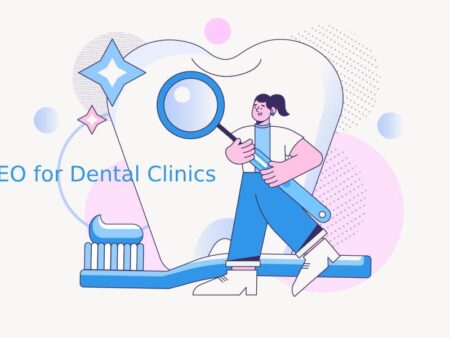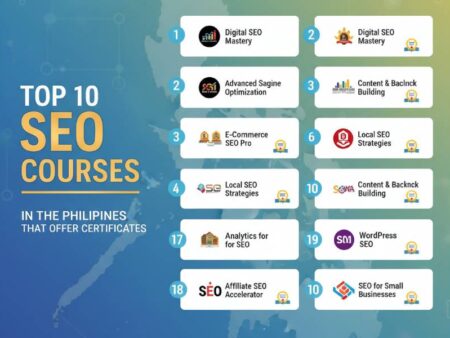
Private Blog Networks, commonly called PBNs, have long been controversial yet integral to the black-hat SEO landscape. Designed to manipulate search engine rankings by creating a network of high-authority websites linking to a target site, PBNs were once a popular and effective method for quickly climbing the SERPs.
However, as search engines, particularly Google, have grown more sophisticated, the viability of using PBNs has drastically changed. Today, deploying PBNs can be a high-risk strategy with consequences that range from deindexation to complete domain penalties.
This article delves into the evolution of PBNs, their associated risks in 2025, and the advancements in search engine algorithms that make it increasingly difficult to game the system with link manipulation.
What is a Private Blog Network (PBN)?
A Private Blog Network is a collection of websites under the control of a single entity used to build backlinks to another site to influence search engine rankings. These blogs often appear unrelated on the surface but are strategically interlinked to funnel link equity and improve the target site’s authority.
The cornerstone of a PBN is expired or auctioned domains that retain existing backlink profiles. These domains are repurposed to serve as link sources while maintaining a semblance of legitimacy.
The Birth and Rise of PBNs
Early Days of SEO
In the early 2000s, search engines relied heavily on link-based algorithms to determine a site’s authority. Backlinks were a strong indicator of a website’s relevance and trustworthiness.
This created a gold rush for link-building strategies, both ethical (white-hat) and manipulative (black-hat). PBNs emerged as a highly effective black-hat method to control backlink sources and game the system.
Peak Popularity: 2010–2015
Between 2010 and 2015, PBNs thrived. The idea was simple:
- Acquire expired domains with strong backlink profiles.
- Rebuild content or use spun content to populate these domains.
- Link from these PBN sites to your money site using keyword-rich anchor text.
Since Google lacked the sophistication it has today, many marketers scaled their PBNs into hundreds of domains, achieving significant SERP gains in short timeframes.
The Fall: Google’s Crackdown on PBNs
Google’s Manual Actions
In 2014, Google launched a large-scale crackdown on PBNs, manually penalizing many known networks. High-profile cases included:
- NoHatDigital
- Rank Hero
- Backlinks.com
These networks saw their domains deindexed, and users who bought links from them received manual action penalties in Google Search Console.
Introduction of the Penguin Algorithm
The Penguin Algorithm update played a pivotal role in deterring link spam. Launched in 2012 and updated periodically, Penguin targets:
- Over-optimized anchor text
- Unnatural linking patterns
- Link schemes, including PBNs
Penguin’s real-time integration in 2016 meant penalties were applied faster, and recovery was more difficult.
PBNs: Are They Still Effective?
As of 2025, PBNs still exist, but their effectiveness has diminished, and the risk has escalated. Let’s break it down.
Are PBNs Still Used?
Yes. Despite warnings and crackdowns, many SEOs still use small, well-maintained PBNs for competitive niches where white-hat techniques may be too slow or insufficient.
However, the focus has shifted to:
- Quality over quantity
- Footprint-free hosting
- Manually written, unique content
- Careful anchor text variation
- Limited outbound links
Are PBNs Still Effective?
PBNs can still move the needle, especially in low to medium competition niches. However, their influence is nowhere near what it was a decade ago.
Most PBNs today are used in combination with:
- Guest posting
- Niche edits
- HARO link building
- Social signals
When used cautiously and at a small scale, PBNs might provide short-term benefits. But for long-term brand-building and sustainable SEO, they are not ideal.
The Risk Level of PBNs in 2025
1. Manual Penalties
Google continues to hand out manual penalties for unnatural link-building, particularly when it detects PBN footprints.
If caught:
- Your site may be deindexed
- You may lose search visibility
- Your SEO investment could be wiped out overnight
2. Algorithmic Detection
Even without a manual review, your site can be hit algorithmically. Modern Google algorithms detect:
- Similar WHOIS data
- Shared IP addresses
- Link velocity spikes
- Duplicate content
- Over-optimized anchors
3. Devaluation of Links
Google’s recent trend is to ignore bad links instead of penalizing them outright. That means:
- Your PBN investment might just do nothing
- You won’t be penalized, but you won’t gain either
4. Legal and Ethical Implications
Search engines view PBNs as manipulative. In some industries (health, finance), regulators and compliance teams may frown upon or outright prohibit black-hat SEO strategies.
How Search Engines Are Getting Smarter
1. Machine Learning Algorithms
Google’s RankBrain and SpamBrain systems leverage machine learning to detect link manipulation.
These systems:
- Analyze link behavior patterns across millions of sites
- Detect similarities in anchor text usage
- Learn from penalized PBNs to catch new ones
2. NLP and Semantic Relevance
Google now looks at contextual relevance between linking and linked pages.
If your PBN has a backlink about “car insurance” from a page about “medieval cooking,” that’s a red flag. NLP (Natural Language Processing) detects and devalues irrelevant links.
3. Link Graph Analysis
Google evaluates the link graph—the web of interconnected sites.
If your site receives links from a cluster of suspicious domains that only link out but receive no links themselves, that’s a footprint.
4. Improved Indexing Systems
With IndexNow and similar protocols, search engines now crawl the web faster and more frequently. Link schemes don’t stay hidden for long.
The Economics of PBNs
Building a safe, stealthy PBN is expensive:
- Aged domains: $100–$500+
- Hosting (unique IPs): $1–$5/domain/month
- Content: $20–$50/article
- Maintenance and updates
- Cloaking and security tools
In contrast, investing in quality white-hat SEO, like content marketing, digital PR, and influencer outreach, provides compounding benefits with lower long-term risk.
Alternatives to PBNs in 2025
1. Digital PR
Get featured on news sites, blogs, and niche magazines. These links are natural, authoritative, and Google-approved.
2. HARO (Help a Reporter Out)
Answer journalist queries to earn backlinks from reputable domains like Forbes, Business Insider, etc.
3. Content Marketing
Publishing useful, well-optimized content consistently helps attract organic backlinks over time.
4. Niche Edits
Request to insert your link into existing, contextually relevant articles on aged domains.
5. Guest Posting
Still effective if done ethically. Avoid mass guest post networks and aim for real blogs with audiences.
Should You Use a PBN?
Use With Extreme Caution If:
- You’re in a highly competitive niche
- You understand the risks and have recovery plans
- You operate affiliate or churn-and-burn sites
Avoid If:
- You’re building a long-term brand
- You’re in YMYL (Your Money, Your Life) niches like health or finance
- You’re not experienced in SEO
How to Identify a PBN
To stay safe (or avoid buying links from one unknowingly), watch out for:
- Domains with unrelated niche content
- Identical or spun content across blogs
- Repetitive anchor text patterns
- Suspicious backlink profiles
- Low or no social signals
Tools like Ahrefs, SEMrush, and Majestic can help you analyze link profiles and spot potential PBNs.
Conclusion
PBNs represent a bygone era of SEO—one where manipulating links was relatively easy and rewarding. But as Google and other search engines evolve, their ability to detect and neutralize link manipulation improves dramatically.
While some SEOs still find success with PBNs, the risks outweigh the rewards for most use cases. Google’s increasingly intelligent algorithms, powered by AI and machine learning, mean that black-hat link-building is a game with diminishing returns.
For long-term growth, focus your efforts on building value, trust, and authority through ethical SEO practices. The future of search favors those who earn their links, not those who build them in secret.
Frequently Asked Questions (FAQ)
What is a Private Blog Network (PBN)?
A PBN is a network of websites built to manipulate search engine rankings by linking to a target site. These sites are often created using expired domains with existing authority, making the links appear natural. However, search engines consider this a black-hat SEO tactic.
How do search engines detect PBNs?
Search engines use sophisticated algorithms to detect patterns such as identical IP addresses, hosting providers, link footprints, and similar content structures. Manual reviews and machine learning also help flag unnatural link profiles commonly associated with PBNs, leading to deindexing or ranking penalties.
Why are links from PBNs considered manipulation?
PBN links are placed solely to influence rankings, not for genuine editorial value. Since they’re not earned naturally, they violate search engines’ guidelines on link schemes. Manipulative linking undermines search quality, prompting strict measures from Google and others to maintain fair ranking systems.
What are the common signs of PBN link footprints?
Common PBN footprints include identical themes, unnatural anchor text distribution, low-quality or spun content, same registrar or WHOIS data, and outbound links to unrelated niches. Search engines track these patterns across domains, identifying connections between seemingly separate sites.
Can using a PBN get my site penalized?
Yes, if search engines detect PBN links pointing to your site, you risk penalties ranging from reduced rankings to complete deindexing. Even if temporary gains occur, long-term consequences can harm your SEO strategy. Google encourages disavowing suspicious links to avoid penalties.
What Are You Waiting, Enroll Now!
Contact Us!Subscribe to this Page
Average rating 5 / 5. Vote count: 500
Share on Social Media
Related Posts
- Website Optimization: Simple Strategies for Beginners
- Why White Hat SEO Matters for Long-Term Website Success
- How to Get Your Website Higher on Google: WSP Guide
- How to Do SEO on Shopify
- Best Ways to Get Backlinks for Your Website








